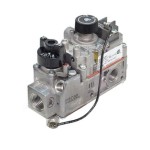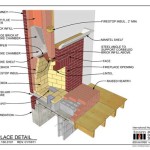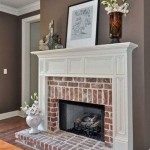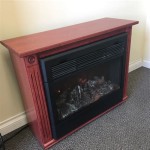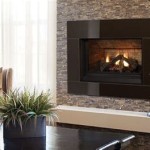Transform Your Fireplace: A Comprehensive Guide to Fire Glass Conversion
Upgrading a fireplace with fire glass is a popular home improvement project, offering a modern aesthetic, improved heat efficiency, and enhanced safety features compared to traditional wood or gas logs. This article provides a detailed overview of converting a fireplace to fire glass, covering crucial aspects such as assessing compatibility, selecting the appropriate materials, and executing the installation process.
Fire glass is tempered glass that has been heat-treated to withstand the high temperatures of a fireplace. It comes in various shapes, sizes, and colors, allowing for customization and personalization of the fireplace’s appearance. Unlike wood, fire glass does not produce smoke, ash, or soot, resulting in a cleaner and more environmentally friendly burning experience. Moreover, fire glass reflects and refracts light, creating a mesmerizing flame display that enhances the ambiance of any room.
Assessing Fireplace Compatibility and Safety Considerations
Before embarking on a fire glass fireplace conversion, a thorough assessment of the existing fireplace is imperative. This includes determining the type of fireplace (gas or propane), measuring the firebox dimensions, and inspecting the gas burner and valve. Ensuring that the fireplace is in good working condition and meets safety standards is paramount.
For gas fireplaces, it is crucial to verify the gas pressure and BTU (British Thermal Unit) rating. Fire glass requires a specific gas pressure and BTU output to function properly and produce optimal flames. The gas burner should be designed for use with fire glass; a standard gas log burner may not distribute the gas evenly or provide adequate support for the glass media. Using an improper burner can result in uneven flames, inefficient burning, and potential safety hazards.
If the fireplace utilizes propane, a propane-compatible burner and valve system must be in place. Propane burns hotter than natural gas and requires specialized components to ensure safe and efficient operation. A professional gas technician should be consulted to inspect the existing gas system and make any necessary modifications or replacements.
Furthermore, consider the ventilation requirements of the fireplace. While fire glass does not produce smoke, proper ventilation is still essential to prevent the buildup of carbon monoxide and other harmful gases. Ensure that the fireplace has a functional chimney or vent system that meets local building codes.
Safety remains the primary concern. Before handling any gas lines or components, the gas supply to the fireplace must be shut off completely. It is advisable to engage a qualified gas technician for any modifications or repairs to the gas system. Never attempt to light a fire with fire glass if there are any gas leaks or if the burner is not functioning properly. Carbon monoxide detectors should be installed in the home to provide an early warning in case of a gas leak or incomplete combustion.
Selecting the Appropriate Fire Glass and Components
Choosing the right type and quantity of fire glass is critical for achieving the desired aesthetic and performance. Fire glass is available in various materials, including tempered glass, recycled glass, and lava rock. Tempered glass is the most common and widely preferred option due to its durability, heat resistance, and reflective properties.
Recycled glass is an environmentally friendly alternative made from repurposed glass materials. While it offers a unique appearance, it may not be as durable or reflective as tempered glass. Lava rock is a natural volcanic rock that provides a rustic and earthy look. It is less reflective than glass but can be mixed with fire glass to create a textured and visually appealing fire feature.
The size of the fire glass pieces can also affect the flame appearance. Smaller pieces tend to produce more flickering and dancing flames, while larger pieces create a more uniform and steady flame pattern. Consider the desired aesthetic and choose the size that best suits the overall design.
The amount of fire glass required depends on the size of the firebox. A general rule of thumb is to fill the firebox with at least two to four inches of fire glass, covering the burner completely. Use a fire glass calculator or consult with a fireplace specialist to determine the precise quantity needed for the specific fireplace dimensions. Undersizing the amount of fire glass results in exposed burner components and uneven flame distribution, while oversizing the amount of fire glass restricts airflow and reduces flame height.
In addition to fire glass, other essential components include a burner pan or tray, a gas connector kit, and a decorative accent, such as fire balls or ceramic logs. The burner pan provides a stable base for the fire glass and helps to distribute the gas evenly. Choose a burner pan that is the appropriate size and shape for the firebox and the burner. The gas connector kit includes the necessary fittings and hoses to connect the gas supply to the burner. Ensure that the kit is compatible with the type of gas used (natural gas or propane) and meets all safety standards. Decorative accents add visual interest and can be used to complement the fire glass. These accents should be heat-resistant and designed specifically for fireplace use.
Installation Procedure and Best Practices
The installation of fire glass involves several steps, each requiring careful attention to detail. Begin by cleaning the firebox thoroughly, removing any residual ash, soot, or debris. Disconnect the gas supply to the fireplace and ensure the burner is cool to the touch.
If replacing an existing burner, carefully disconnect the gas line and remove the old burner. Install the new burner pan or tray, ensuring that it is level and securely positioned within the firebox. Connect the gas supply to the new burner using the gas connector kit, following the manufacturer's instructions meticulously. Apply pipe thread sealant to all threaded connections to prevent gas leaks. Once the connections are made, test for leaks by applying a soap and water solution to the joints. If bubbles appear, tighten the connections until the leaks are sealed.
Once the gas connections are secure and leak-free, carefully pour the fire glass into the burner pan, distributing it evenly around the burner. Do not overfill the pan, as this can restrict airflow and reduce flame height. Leave some space around the edges of the pan to allow for ventilation. If using decorative accents, arrange them strategically on top of the fire glass to create the desired visual effect.
After the fire glass and decorative accents are in place, turn on the gas supply and light the fireplace according to the manufacturer's instructions. Observe the flame pattern and adjust the gas flow as needed to achieve the desired flame height and appearance. Start with a low flame and gradually increase the gas flow until the flames are stable and evenly distributed.
During the initial burn, the fire glass may emit a slight odor as it heats up for the first time. This is normal and will dissipate after a few hours of use. Monitor the fireplace closely during the first few burns to ensure that it is functioning properly and that there are no gas leaks or other safety hazards. Periodically inspect the fire glass for any signs of damage or discoloration. Replace any damaged or discolored pieces to maintain the aesthetic appeal and safety of the fireplace.
Regular maintenance of the fire glass fireplace is essential to ensure its longevity and optimal performance. Clean the fire glass periodically with a soft brush or vacuum cleaner to remove any dust or debris. Inspect the burner and gas connections regularly for any signs of corrosion or damage. If any issues are detected, contact a qualified gas technician for repairs.
Fire glass fireplaces offer a modern and stylish alternative to traditional wood or gas logs. By following these guidelines and taking the necessary precautions, homeowners can safely and effectively convert their existing fireplace to fire glass and enjoy the beauty and warmth it provides.
Always prioritize safety and consult with qualified professionals when dealing with gas lines and appliances. Proper installation and maintenance are crucial for ensuring the safe and efficient operation of a fire glass fireplace.

Gallery Of Converted Natural Gas Fireglass Fireplaces And Outdoor Fire Pits Glass Fireplace

Fireplace Glass For Fire Pits And Fireplaces

Real Fyre Contemporary 30 Inch Vent Free Gas Fire Glass Set Insert Direct

Duluth Forge Vent Free Stainless Outdoor Gas Fireplace Insert With Cry Buyersdepot Com

Real Fyre Contemporary 30 Inch Vent Free Gas Fire Glass Set Insert Direct

How To Modernize And Update A Gas Fireplace We Love Fire

Real Fyre Reflective Fire Glass For Contemporary Gas Burners Insertazuria 40 Lb Bucket Fireplace Pit

Zero Clearance Vs Prefabricated Fireplace Full Service Chimney
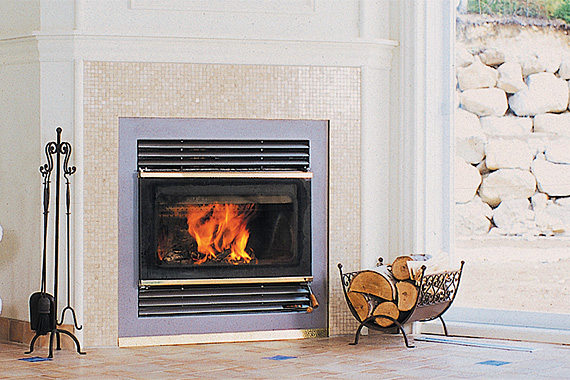
Energy Efficient Wood Burning Fireplaces

Bluegrass Living Vent Free Stainless Outdoor Gas Fireplace Insert With Fire Glass Med Bl450ss L Zoro
Related Posts

